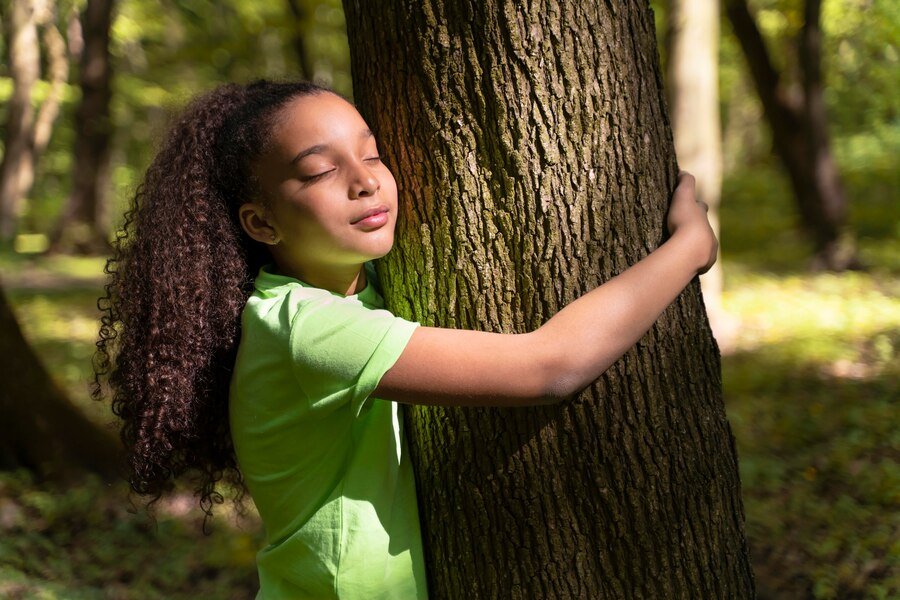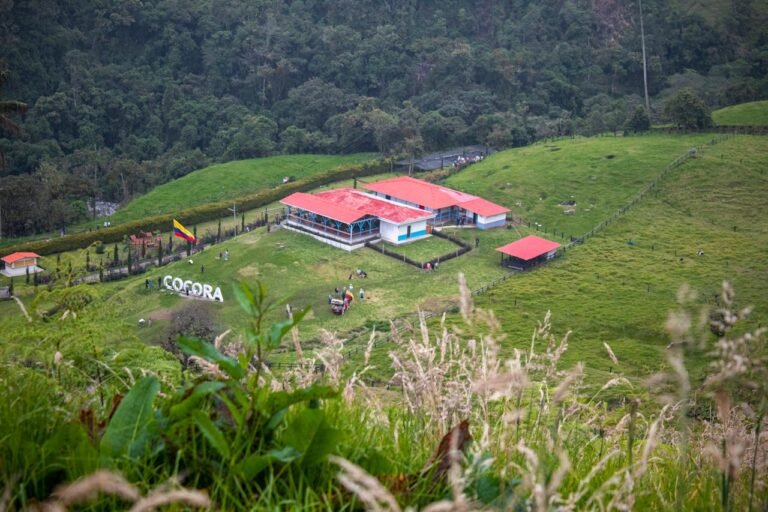What Is a Tree Hugger? An Expert Guide
Have you ever been called a “tree hugger” or wondered what it truly means? For some, the phrase brings to mind images of people literally wrapping their arms around trees in a heartfelt embrace—a simple yet powerful act of connection with nature. For others, it’s a term used to describe those deeply committed to environmental preservation and sustainability. While it’s sometimes thrown around as an insult, being a tree hugger is far from a negative thing. In fact, it’s a badge of honour for those who care deeply about the planet.
The term has rich historical roots, tracing back to the 1970s Chipko movement in India, where villagers physically hugged trees to stop deforestation. Today, it’s a symbol of environmental advocacy, representing people from all walks of life—scientists, activists, educators, and everyday individuals—who are working tirelessly to protect our natural world.
In this guide, we’ll explore the origins of “tree hugger,” its evolving meaning, and the tangible ways tree huggers are shaping a more sustainable future. Whether you’re already part of the movement or just curious to learn more, you’ll discover that being a tree hugger is about more than just saving trees—it’s about fostering a deeper connection with the Earth and leaving a lasting impact for generations to come.

In This Article
- The Origins of “Tree Hugger”
- The Science Behind Tree Hugging
- Real-World Impact of Tree Huggers
- How to Embrace the Tree Hugger Lifestyle
- Future Outlook: The Evolving Role of Tree Huggers
The Origins of “Tree Hugger”
The term “tree hugger” might sound quirky or even playful today, but its origins are deeply rooted in a serious and courageous movement that changed the world. It all began in the 1970s in India, with the Chipko movement—a name derived from the Hindi word chipko, which means “to cling.” This wasn’t just about people hugging trees for the sake of it. It was a bold, nonviolent protest by villagers, most of whom were women, standing arm-in-arm with nature to protect it from being destroyed.
At the time, deforestation in the Himalayan region was rampant. Entire forests were being wiped out for timber, leading to devastating consequences: soil erosion, landslides, and the loss of wildlife habitats. For the villagers who depended on these forests for their water, food, and livelihoods, this wasn’t just an environmental issue; it was a matter of survival.
Imagine this: a group of women standing in front of towering trees, their arms outstretched and their determination unwavering, refusing to let loggers take down what they saw as not just trees, but life itself. These women weren’t trained activists. They were mothers, daughters, and grandmothers who understood, in their hearts, that losing the forest would mean losing everything.
Their bravery sparked a movement. The Chipko protests spread, and the villagers’ persistence paid off. Over time, their efforts led to a ban on commercial logging in the region, protecting the forests that they had risked their lives to save. The message they sent was simple yet profound: forests are not commodities; they are life-support systems that connect us all.
This grassroots movement didn’t just save trees. It inspired environmental activism across the globe. The phrase “tree hugger” emerged from this context, evolving into a symbol of people who stand up for nature, often against overwhelming odds.
Mahatma Gandhi’s words resonate deeply here: “What we do to the forests of the world is but a mirror reflection of what we are doing to ourselves and to one another.” The Chipko movement wasn’t just about clinging to trees; it was about clinging to hope, community, and the belief that protecting nature is ultimately protecting humanity itself.
Learn More: 11 Fast-Growing Trees for Shade at Home
Modern Tree Huggers: Who Are They?
Today, tree huggers are everywhere—they’re activists fighting for clean energy policies, conservationists protecting endangered species, educators teaching the next generation about climate change, scientists researching sustainable solutions, and everyday people making eco-friendly choices in their lives. These individuals, no matter their background, share one thing: a deep commitment to safeguarding the planet.
Breaking the Stereotype
The outdated stereotype of a tree hugger as a fringe environmentalist is no longer accurate. In fact, modern tree huggers include CEOs who are steering their companies toward greener practices, urbanites cultivating rooftop gardens to combat city heat, and young students leading climate strikes that demand action from world leaders. These are people from all walks of life—parents, teachers, artists, farmers—all united by a common mission to protect and nurture the environment.
It’s not about being perfect or abandoning modern conveniences. It’s about making conscious decisions that align with a vision for a healthier planet. Whether it’s choosing reusable products over disposables, advocating for renewable energy, or simply planting a tree in their neighbourhood, modern tree huggers are redefining what it means to care for the Earth.
A Personal Journey
Let me share a bit about my own transformation. Growing up in a busy city, I rarely thought about nature. Skyscrapers and traffic were my daily backdrop, and the natural world felt like something distant, reserved for documentaries or the occasional trip to the park. But everything changed during a college trip to a forest. I remember standing beneath a towering ceiba tree, its canopy stretching endlessly above me. The air was alive with sounds—birds, insects, the rustling of leaves—and I felt, for the first time, an overwhelming connection to the natural world. It wasn’t just beautiful; it was essential. That moment planted a seed in me, one that grew into a passion for environmental advocacy.
Today, I consider myself a tree hugger, not because I’ve abandoned modern life, but because I’ve chosen to integrate sustainable practices into it. And I’m not alone. Modern tree huggers are proof that caring for the planet isn’t just a trend—it’s a responsibility we all share.
The Science Behind Tree Hugging
Let’s talk about why hugging a tree or just spending time around them can do wonders for us. It’s not just some feel-good idea; there’s solid science backing it up. Trees aren’t just vital for the planet—they’re also amazing for your body and mind.
Environmental Benefits
First, let’s look at what trees do for the environment. They’re like nature’s superheroes. One of their superpowers is carbon sequestration. Basically, trees soak up carbon dioxide—a major greenhouse gas—from the atmosphere. This helps fight climate change. Think of them as the Earth’s lungs, cleaning the air for us.
Then there’s biodiversity support. Did you know that forests are home to about 80% of the species that live on land? From tiny insects to big predators, trees provide food, shelter, and protection to all kinds of creatures.
And don’t forget air purification. Trees act like natural air filters, trapping dust, pollutants, and harmful gases. Every time you breathe in fresh forest air, it’s thanks to these green giants.
Health Benefits
Now let’s talk about what trees do for you. Spending time around them isn’t just pleasant—it’s incredibly good for your health. A 2023 study by Stanford University showed that spending time in forests reduces cortisol levels. What’s cortisol? It’s your body’s stress hormone. Lowering it means you’ll feel calmer and more relaxed.
But that’s not all. Trees release natural compounds called phytoncides. When you breathe them in, they can actually boost your immune system. It’s like nature’s way of giving you a health supplement, free of charge.
Expert Insight
Dr. Qing Li, a world-renowned expert in forest therapy, puts it beautifully: “Spending time in nature isn’t just a luxury; it’s a necessity for human health and well-being.” And it’s true. Whether you’re hiking through a forest or sitting under a tree in a park, you’re doing something wonderful for your body and mind.
Real-World Impact of Tree Huggers
Community Efforts: A Spotlight on Urban Tree Planting
In urban areas, tree huggers are at the forefront of greening initiatives that tackle pressing environmental challenges. Take Los Angeles, for instance, a city known for its heat and smog. Organisations like TreePeople have stepped up to transform the landscape, bringing cooler, greener, and healthier spaces to the community. By planting over 3 million trees, they’ve helped reduce the urban heat island effect—a phenomenon where cities become significantly hotter than surrounding areas due to concrete and asphalt absorbing heat.
These trees don’t just provide shade. They improve air quality by filtering pollutants, reduce energy costs by cooling buildings, and create habitats for urban wildlife. Most importantly, they bring people together. Community members often join these planting drives, building stronger social connections while contributing to a greener future.
Real-World Statistics: The Power of Tree Huggers
| Statistic | Impact |
|---|---|
| 3 million trees | Trees planted by TreePeople, transforming urban landscapes in Los Angeles |
| 5–10°F cooler | Temperature reduction in areas with increased tree coverage |
These efforts demonstrate that change starts locally. One tree planted might seem small, but it’s part of a larger movement that ripples outward, influencing urban design, public health, and even climate resilience. Tree huggers remind us that caring for the planet isn’t an abstract idea—it’s about rolling up our sleeves and taking action right where we live.
How to Embrace the Tree Hugger Lifestyle
Becoming a tree hugger isn’t about radical changes or going completely off the grid. It’s about adopting small, thoughtful habits that benefit the environment and, by extension, our lives. Here’s how you can get started:
1. Adopt Sustainable Practices
One of the simplest ways to embrace a tree-hugger lifestyle is by reducing waste. Start small: swap out single-use plastics for reusable alternatives. Carry a water bottle, use cloth grocery bags, and opt for glass containers instead of disposable plastic ones. Composting is another excellent step. It might sound complicated, but it’s as simple as collecting food scraps and yard waste to create nutrient-rich soil for your garden.
Water conservation is just as important. Did you know that installing a rain barrel can save thousands of gallons of water each year? It’s an easy way to collect and reuse rainwater for your plants. Also, consider switching to water-efficient appliances. Even small changes, like fixing leaks or turning off the tap while brushing your teeth, add up.
2. Advocate for Policy Change
Your voice matters. Advocacy doesn’t have to mean standing in front of parliament or chaining yourself to a tree (although, kudos if you do). It can be as simple as writing to your local representatives about issues that matter, like forest conservation or renewable energy policies. Signing petitions, attending community meetings, or joining environmental campaigns are also powerful ways to contribute.
One person can ignite change. Remember the ripple effect: when one person speaks up, it inspires others to do the same.
3. Plant Trees
Planting trees is one of the most impactful actions you can take. Whether it’s in your backyard, at a community park, or through organised tree-planting drives, every tree planted contributes to a healthier planet. Native species are best since they support local biodiversity and thrive in their natural environments. Plus, watching something you planted grow over the years is incredibly rewarding.
4. Educate Others
Share what you know. Awareness is the first step toward action. Whether through social media, writing blogs, or organising workshops, educating others can spark a ripple effect of change. You don’t have to be an expert—just share your journey and experiences. People are more likely to engage when they see real stories and relatable actions.
Learn More:
Challenges Faced by Tree Huggers
The Problem of Deforestation
Every year, the world loses about 10 million hectares of forest (FAO, 2020). To put that into perspective, that’s an area roughly the size of South Korea vanishing annually. This destruction is driven by logging, agriculture, and urban expansion. For tree huggers, watching ancient forests—the lungs of our planet—being chopped down is heartbreaking. Forests not only absorb carbon dioxide but also provide homes for countless species. Losing them means more greenhouse gases in the atmosphere and less biodiversity.
Corporate Resistance
Tree huggers often find themselves up against corporations that prioritise profit over sustainability. Many industries, such as fossil fuels and large-scale agriculture, continue harmful practices because they’re lucrative. Even well-intentioned companies sometimes fall short, offering token gestures instead of meaningful change. Convincing these entities to put the environment first can feel like trying to move a mountain, slow and daunting.
Public Apathy
One of the toughest challenges tree huggers face is convincing people to care. Many individuals are simply unaware of the environmental crisis or feel powerless to make a difference. Others may resist change, viewing sustainable practices as inconvenient or unnecessary. This apathy can be deeply frustrating for those who understand the urgency of protecting our planet.
Solutions: Turning Challenges into Opportunities
Collaboration Is Key
Tree huggers can’t do it alone. By teaming up with governments, non-profits, and communities, their efforts can reach farther. For example, partnerships between conservation organisations and local farmers have successfully promoted sustainable agriculture that benefits both people and the planet.
Rewarding Sustainability
Incentivising eco-friendly practices can motivate businesses to make greener choices. Governments offering tax breaks or subsidies to companies that adopt renewable energy or reduce waste can shift priorities towards sustainability.
Raising Awareness
Education is a powerful tool. When people see the tangible benefits of conservation—like cleaner air, healthier communities, and cost savings—they’re more likely to get involved. Sharing stories, hosting workshops, and using social media can help spread the word and inspire action.
A Shared Responsibility
Overcoming these challenges requires everyone—not just tree huggers—to play a part. Whether it’s planting a tree, supporting eco-friendly businesses, or simply spreading awareness, small actions can lead to big changes. Together, we can build a future where protecting nature is second nature.
Learn More: 11 Best Bible Quotes on Environmental Stewardship
Future Outlook: The Evolving Role of Tree Huggers
The world is changing rapidly, and so is the role of tree huggers. As climate change becomes more severe, the need for people who care deeply about the environment is greater than ever. Tree huggers are no longer just activists hugging trees in forests; they are also tech innovators, scientists, and everyday people working toward a sustainable future.
New technologies are giving tree huggers more powerful tools to make a real difference. For instance, drone reforestation is revolutionising the way we plant trees. Companies like Dendra Systems are using drones to scatter seeds across large areas, planting trees up to ten times faster than traditional methods. This innovation not only saves time but also makes it possible to reforest areas that are hard to reach by humans.
Another game-changing technology is carbon capture. This involves capturing carbon dioxide from the atmosphere and storing it safely, which works alongside the natural ability of trees to absorb CO2. Together, these methods can significantly reduce the amount of greenhouse gases in the atmosphere.
The future is bright for tree huggers. With passion, determination, and cutting-edge tools, they’re showing the world that we can fight climate change and create a greener, healthier planet for everyone.
Conclusion: Be the Change
Tree huggers embody the hope and determination needed to address today’s environmental crises. Whether you’re planting a sapling, advocating for policy reform, or simply choosing reusable products, your actions matter. As the saying goes, “The best time to plant a tree was 20 years ago. The second-best time is now.”
So, will you join the ranks of tree huggers and take a stand for the planet? Let’s make a difference, one tree at a time.







